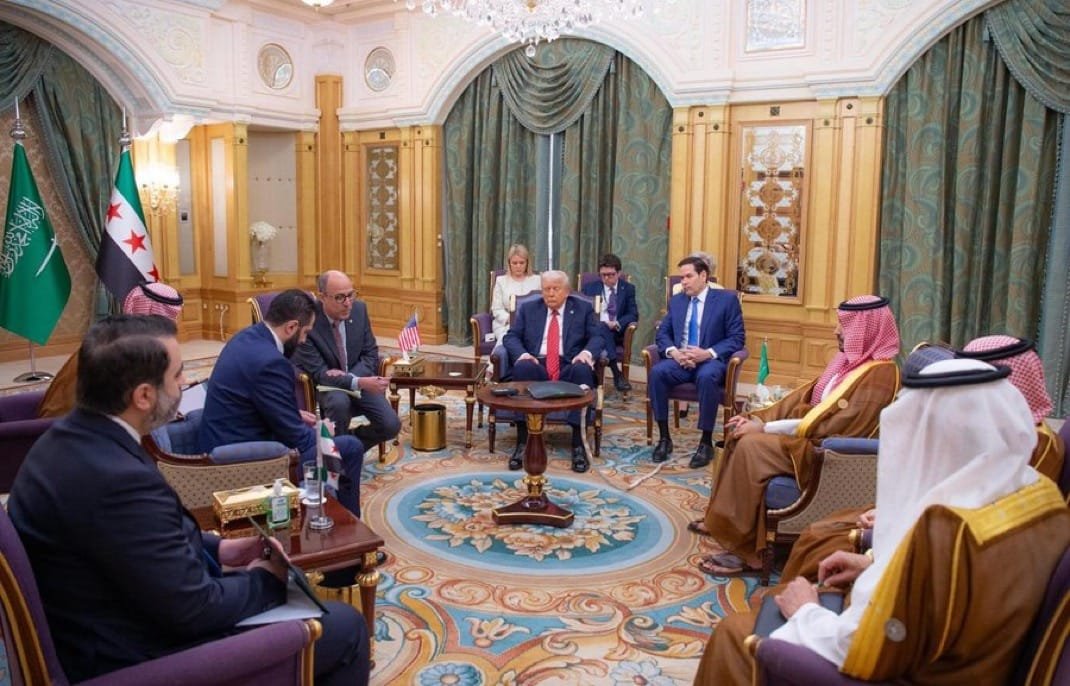
Introduction to Currency Strength
Currency strength is a multifaceted concept that reflects a currency’s value relative to other currencies in the global market. It serves as an essential indicator of a nation’s economic health, influenced by various factors, including economic stability, interest rates, and inflation. Understanding these elements is crucial for grasping why certain currencies are deemed stronger than others.
One significant factor impacting the strength of a currency is economic stability. Countries with stable economies are more likely to attract foreign investment, leading to an appreciation of their currency. For instance, nations with low political risk and sound economic policies tend to maintain their currency’s strength, as they instill confidence among investors. In contrast, economic instability—often marked by high levels of debt or political uncertainty—can erode a currency’s value, making it less favorable in comparison to more robust currencies.
Interest rates also play a critical role in determining currency strength. Central banks manipulate interest rates as a tool to control inflation and influence economic activity. Higher interest rates often attract foreign capital seeking better returns, which can strengthen the currency. Conversely, lower interest rates may lead to currency depreciation, as investors seek higher yields elsewhere. The relationship between interest rates and currency strength highlights the delicate balance policymakers must maintain to foster economic growth while ensuring currency stability.
Additionally, inflation impacts a currency’s value on the global stage. A country with low, stable inflation is likely to see its currency appreciate, while high inflation can diminish purchasing power and deter investment. Currencies operating within low inflation environments tend to reflect confidence and are thus perceived as stronger.
In essence, currency strength is a product of various interacting factors that determine its value in the international market. By examining these components, we can better understand which currencies may emerge as the strongest in 2025.
Historical Context of Currency Strength
The strength of a currency is determined by various economic, political, and social factors that evolve over time. Analyzing historical currency trends reveals significant insights into how certain currencies have risen to prominence while others have diminished in value. Particularly, the late 20th century witnessed a shift in global economic power, influencing currency valuation. The U.S. dollar, which has maintained its position as a dominant currency for decades, can be traced back to the Bretton Woods Agreement of 1944, where it was pegged to gold, bolstering its strength globally.
In the 1980s and 1990s, various factors led to an appreciation of the Japanese yen and the European euro as global economic players emerged. Japan’s post-war economic boom positioned the yen as one of the strongest currencies in the world, attracting investments and boosting trade relations. Similarly, the euro gained traction after its introduction in 1999, becoming the second most held reserve currency worldwide, rivaling the dollar.
Throughout the past two decades, emerging economies such as China have increasingly influenced the landscape of currency strength. The renminbi has steadily gained significance on the global stage, exemplifying the economic rise of China. In the aftermath of the 2008 financial crisis, the concept of currency strength also evolved, with central banks adopting unconventional monetary policies leading to fluctuations in currency values.
Recent trends indicate that factors such as geopolitical tensions, inflation rates, and shifts in trade policies are key drivers of currency strength. The analysis of historical data illustrates that these elements are likely to play crucial roles in shaping the strongest currencies for the year 2025. As nations navigate through uncertain economic waters, understanding historical context will provide valuable insights into anticipated trends and potential currency trajectories moving forward.
Key Factors Influencing Currency Value
Understanding the nuances that determine currency value is essential for grasping the robust economic landscape expected in 2025. Several key factors play pivotal roles in influencing the strength of a currency. Among these, Gross Domestic Product (GDP) stands out as a fundamental indicator of economic health. A higher GDP usually signals a strong economy, which can enhance investor confidence and bolster the currency’s value. Nations with expanding economic activity, innovation, and productivity typically witness upward pressure on their currency rates.
Another significant contributor to currency valuation is the trade balance. A surplus indicates that a nation exports more than it imports, leading to an increased demand for its currency. This phenomenon enhances currency strength as global market participants need to purchase that currency to engage in trade. Conversely, a trade deficit can lead to depreciation, undermining currency performance over time. Investors and policymakers will closely monitor trade balances in the lead-up to 2025.
Political stability is also critical in determining currency value. Countries characterized by stable governments foster trust among investors, making their currencies more attractive. Conversely, political turmoil or uncertainty can lead to volatility and a decline in currency strength, as investors tend to seek safer havens for their assets during turbulent times. Thus, maintaining a stable political landscape is vital for safeguarding currency value.
Finally, global economic trends will shape currency strength significantly. Geopolitical relationships, inflation rates, and interest rates all interact globally, affecting the perception of a currency’s stability and reliability. Factors such as changes in central bank policies and international trade agreements can precipitate shifts in currency dynamics. In summary, a comprehensive understanding of these elements will be pivotal in forecasting the strongest currency for 2025 and beyond.
Top Contenders for the Strongest Currency in 2025
As we look toward 2025, several currencies are poised to emerge as the strongest contenders in the global economic landscape. Prominent among these is the US Dollar (USD), which has historically held a dominant position in the currency market due to its widespread use in international trade and reserve currency holdings. The economic stability of the United States and the robustness of its financial systems will likely support the USD’s continued strength. Analysts predict that the Federal Reserve’s monetary policies, stemming from an improving labor market and controlled inflation, will further bolster the dollar’s position.
The Euro (EUR) also remains a significant contender, representing a collective economy of numerous European nations. Despite facing hurdles such as political tensions and economic disparities among member states, the Eurozone’s efforts towards fiscal unity and economic recovery could reinforce the currency’s standing in 2025. As the region adjusts to post-pandemic challenges, the strength of the Euro will depend on European Central Bank policies and the region’s ability to sustain growth amidst external pressures.
Another important player is the Swiss Franc (CHF), widely regarded as a safe-haven currency. Known for its stability, the Swiss Franc benefits from Switzerland’s strong banking system, low debt levels, and a reputation for neutrality. As global economic uncertainties persist, investors may flock to the CHF, further elevating its strength in the coming years.
Emerging currencies, such as the Chinese Yuan (CNY), should not be overlooked. With China continuing to expand its influence in global trade, the Yuan is anticipated to gain increasing prominence. Factors such as trade agreements and China’s role in international finance will heavily impact the Yuan’s trajectory as a leading currency by 2025. A diversified portfolio of currencies may ultimately define the strongest players in the marketplace as the global economy evolves.
Economic Predictions for 2025
The landscape of the global economy is influenced by numerous variables, making accurate predictions both complex and necessary. As we look ahead to 2025, various economists and financial analysts are providing insights that may shape our understanding of the strongest currency in the world. One vital indicator is the inflation rate, which is projected to influence currency strength as central banks respond with interest rate adjustments. Major economies, including the United States and the Eurozone, are likely to navigate continued inflationary pressures. Predictions suggest that inflation will stabilize but not without significant shifts in monetary policy that may affect currency valuations.
Interest rate changes will be a crucial factor in determining the robustness of currencies globally. The Federal Reserve, European Central Bank, and other central banks may either raise or lower interest rates to control inflation. Higher interest rates typically attract foreign investment, thereby strengthening the currency involved. Conversely, lower rates may lead to currency depreciation. Analysts expect a cautious tightening of monetary policy in the U.S., while the Eurozone may adopt a more gradual approach. Such dynamics will be pivotal in shaping the financial environments of both regions and influencing the relative strength of their currencies.
Furthermore, geopolitical factors such as trade relationships and political stability will play integral roles in currency performance. The geopolitical landscape is poised for shifts impacting global trade flows and economic alliances. Analysts foresee potential trade tensions, particularly concerning emerging markets and established economies, which could influence the balance of trading activities and hence the valuation of currencies. Consequently, while economic forecasts present a picture of potential outcomes for 2025, the interplay of inflation, interest rates, and geopolitical factors will ultimately dictate which currency may emerge as the strongest by that time.
Impact of Geopolitical Events on Currency
Understanding the influence of geopolitical events on currency strength is crucial for predicting which currencies may dominate in 2025. Recent history illustrates how international relations, trade agreements, and political tensions can significantly affect currency values. For instance, during the 2016 Brexit referendum, the British pound experienced a sharp decline, plummeting to its lowest value against the US dollar in over three decades. This situation arose mainly from uncertainty surrounding the future relations between the UK and the European Union, underscoring how voters’ decisions can ripple through markets and lead to currency depreciation.
Moreover, the trade tensions between the United States and China that escalated in 2018 had profound ramifications on both nations’ currencies. Tariffs imposed led to fluctuations in the value of the Chinese yuan, prompting the US dollar to strengthen as investors sought safety amid the uncertainty. These events demonstrate the interconnectedness of global economies and how trade policy shifts can lead to immediate repercussions on currency strength.
Looking ahead to 2025, several factors will likely influence the global currency landscape. The ongoing conflict in Eastern Europe, for example, presents risks for the Euro and regional currencies involved in trade. Similarly, a shift towards protectionist policies among major economies could lead to instability for currencies that are highly reliant on international trade agreements. Additionally, the rise of digital currencies may further complicate the geopolitical landscape, potentially challenging traditional currencies as nations adapt to evolving financial technologies.
In conclusion, as we analyze the potential strong currencies of 2025, it is essential to consider the broader political environment. Geopolitical events will continue to shape market dynamics, meaning investors must remain vigilant regarding international developments and their impacts on currency valuations.
Investing Strategies Based on Currency Strength
As we approach 2025, understanding the dynamics of currency strength becomes pivotal for both individuals and businesses. With fluctuations in the forex market influencing investment opportunities, adopting strategic approaches tailored to anticipated currency movements is essential. One effective strategy is forex trading, which involves buying and selling currency pairs to capitalize on their exchange rate variations. Traders aiming to exploit anticipated shifts can analyze economic indicators, geopolitical events, and market sentiment to time their trades effectively. Engaging in forex trading requires a sound understanding of market mechanics and risk management practices to navigate the inherent volatility.
Another strategy is international diversification of investments. By spreading investments across different currencies and regions, investors can potentially gain exposure to stronger currencies as they appreciate relative to weaker ones. This approach not only enhances the portfolio’s resilience against currency depreciation but also opens up opportunities in emerging markets. Investing in foreign stocks or bonds denominated in strong currencies can yield favorable returns, especially in the context of projected currency strength moving into 2025.
Furthermore, hedging strategies can serve as effective tools for mitigating risks associated with currency fluctuations. Businesses engaged in international trade can utilize options and futures contracts to hedge against adverse currency movements. By locking in exchange rates ahead of transactions, companies can protect their profit margins and maintain stability in their operations. Similarly, corporate treasurers can consider currency swaps as a means to manage exposure to foreign exchange risk, ensuring that their financial performance aligns with strategic objectives.
In summary, understanding and applying effective investing strategies based on anticipated currency strength can significantly enhance the potential for financial gain. Whether through forex trading, international investment diversification, or implementing hedging techniques, investors and businesses alike can navigate the complexities of the foreign exchange landscape, positioning themselves advantageously for the challenges and opportunities that lie ahead in 2025.
Predictions vs. Reality: What to Expect in 2025
Forecasting the strength of currencies can often be a challenging endeavor, especially in the fast-paced and volatile landscape of global finance. While many analysts endeavor to determine the strongest currency in the world for 2025, several factors must be considered that could significantly influence the accuracy of these predictions. Economic indicators, geopolitical developments, and unexpected global events play pivotal roles in shaping currency valuations, complicating the forecasters’ task.
One common pitfall in financial forecasting is relying too heavily on historical data. While past performance can provide insights into trends, it does not guarantee future outcomes. Economic conditions, such as inflation rates, employment figures, and political stability, can swiftly alter the trajectory of a currency. For example, currencies that may seem strong in 2023 could face dramatic shifts due to changes in government policy or international relations. This unpredictability necessitates a more nuanced understanding of both current and emerging economic landscapes.
Moreover, external influences such as technological advancements and environmental factors must not be overlooked. The rise of digital currencies, for instance, presents a unique challenge to traditional currencies as they become more integrated into the finance world. Additionally, global crises, such as pandemics or natural disasters, can have instantaneous effects on currency strength, underscoring the importance of adaptability in financial forecasting.
Investors and analysts are encouraged to remain informed and flexible in their strategies given the unpredictable nature of currency markets. While predictions can provide a framework for understanding possible outcomes, they should be viewed as one component of a larger financial strategy. By combining insights from expert projections with awareness of real-world events, stakeholders can better position themselves to navigate the challenges that may arise in 2025 and beyond.
Conclusion and Final Thoughts
In summary, the exploration of the strongest currency in the world for 2025 has highlighted various crucial factors that drive currency dynamics. The analysis indicates that economic stability, political factors, and global market trends play significant roles in determining the strength of any currency. As we have seen, currencies like the United States dollar, the euro, and emerging contenders are subject to fluctuations influenced by international trade, monetary policies, and geopolitical events.
Furthermore, the importance of understanding these variables cannot be overstated. With the rapid evolution of the global economy, being informed about the potential candidates for the strongest currency in 2025 allows individuals, investors, and businesses to make more strategic financial decisions. The interconnectedness of the world’s economies means that shifts in one region can have far-reaching implications for currencies worldwide.
It is also essential for readers to remain vigilant and proactive in following economic trends as we approach 2025. The financial landscape is continuously changing, driven by factors such as technological advancements and shifts in consumer behavior. These developments can affect currency valuations and stability, underscoring the need for ongoing research and analysis.
As we consider the future, it is prudent to recognize that predicting currency strength is inherently complex and fraught with uncertainty. However, by understanding the fundamental aspects that influence currency dynamics, stakeholders can better position themselves in the evolving economic environment. Ultimately, a comprehensive approach to monitoring these factors will yield deeper insights into which currency will emerge as the strongest in 2025.







